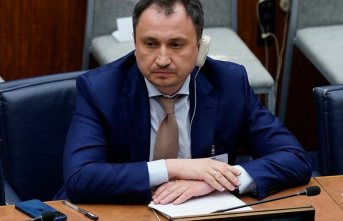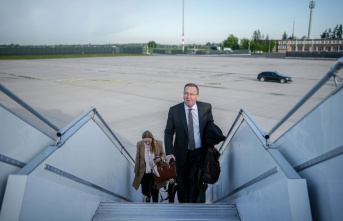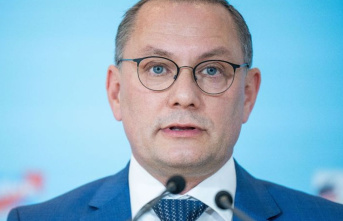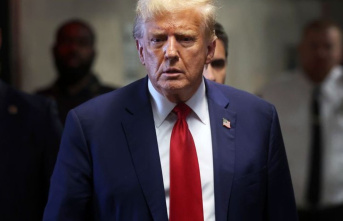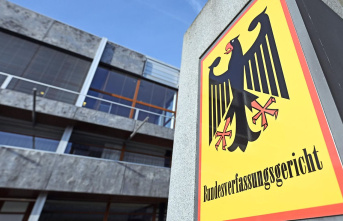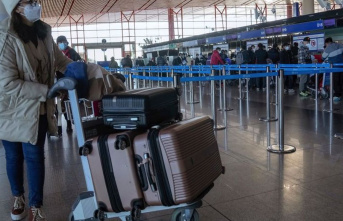The front in Ukraine is about 1000 kilometers long. After the spectacular advance of the Ukraine east of Kharkov and the Russian withdrawal from the Cherson bridgehead that soon followed, there were no longer any major front shifts, but bitter fighting continued in the Donbass. For months there has been a struggle over the small town of Bachmut. With a win here, Moscow hopes to drive a wedge between the Ukrainian defenders' northern and southern Donbass positions.
But here, too, the movements of the front, which were small anyway, have flagged. The advances of the Wagner soldiers, who are primarily used, are regularly followed by counterattacks by the Ukraine, which means that the positions just conquered have to be abandoned again. "No pasaran!", the Russians won't get through, one might think. Another defeat of the Kremlin.
But the situation is not that simple. The battle for Bachmut not only serves to gain additional operational options in the event of victory. Ultimately, this could lead to the entire Ukrainian Donbass front being unhinged. The battle is primarily based on the same calculations as the Russian Donbass offensive in the spring. Bachmut is a "meat grinder" - or a "blood mill", as the German term from the First World War (How the Russian meat grinder can be stopped).
It's about teaching the opponent losses that he can't bear in the long run. If one follows the western news, this calculation by Moscow also fails miserably. On the contrary, the Russian losses are unbearable. The British press in particular gets intoxicated by drones blowing up Russian transporters, infantrymen lying helpless in the dirt and being fired upon by artillery. And of course the "Girls with Guns" genre is also eagerly served by the British, for example when Ukrainian snipers confess "I don't give a damn" when they kill a Muscovite.
The only question is, are these confessions correct or is the picture they paint not one-sided? Exactly the same images of human misery in war can be found on pro-Russian channels. Only here are Ukrainian soldiers lying in tatters in their trenches, panning to a dead man who was able to crawl a few meters further. Drones drop bombs on a bunker's smoke vent and video clips show the last moments from the cellphones of fallen Ukrainians.
The "Russians are losing an incredible number of soldiers" narrative is as old as Putin's invasion of Ukraine. Since February, the number of casualties has mostly been given as a minimum of one in four in favor of Ukraine. Losses in the military sense include not only the fallen soldiers, but also seriously injured people who will not return to the front in the foreseeable future, as well as the missing, the missing and the deserters. In the case of deserters, on the other hand, only those who have already been called up and are leaving the troops are counted. Men who evade conscription, for example by going abroad, are not included in the statistics.
Long story short: only part of the "losses" are dead - the others are only lost to the military. Even a cynical despot like Putin cannot endure a loss rate of one in four for long – figures have sometimes even been rumored that ranged up to one in seven. This story complements other pro-Kyiv narratives on information warfare: the Russians are running out of tanks, ammunition, missiles and missiles. Your "good" troops have been destroyed, now only cannon fodder is coming to the front.
In fact, the situation is different. Both sides do not publish detailed or truthful figures, as one would expect in a war. But in November, estimates that go back to the US military set significantly different accents. With all the uncertainty of an estimate, these figures assume military losses of around 100,000 men - for both sides. A par. Added to this are the civilian losses that mainly burden Ukraine in the war.
Instead of "one to four" it says "one to one". Such a relationship has far-reaching consequences. It means that the forces of the Ukrainian army are worn out, like the invading Russian troops. Simply put, for every "Putin's elite brigade crushed" story, there's the opposite story. The Russian losses in tanks and heavy equipment are then offset by similar losses in Kiev. That's not surprising. It was already known in the summer that the original equipment of the Kiev forces was largely consumed. The autumn offensives were essentially fought with equipment that was delivered from the west.
And so the view of the war turns. Ukraine can only win it if bold operations continue to succeed and if Russia loses far more troops and materiel. "One in four" would be the road to victory. Slow, bloody and tedious - but unstoppable. With "one to one" the picture looks different. Even such a status would not secure a place in the military pantheon for Putin's generals, but victory. Infamous, ugly and bloody - but also unstoppable.
And that's why "meat grinders" like Bachmut make sense for the Kremlin. In the bullet-riddled town, battles erupt like in the "Rat War" of Stalingrad (Pavlov's house – how a sergeant held up a German division for sixty days). A constant wear and tear on the level of small movements. There can hardly be any major mistakes here, as in large-scale operations. New soldiers are constantly being shoved into this hell like an oven. Losses are also heavy for the Russians. But the use of the Wagner mercenaries is helping Putin; they are not part of the official armed forces and are at least all "somehow" voluntarily in Ukraine. The Wagnerians are also divided into two groups: specialized and experienced professional soldiers and cannon fodder that comes from prisons and penal camps in Russia. The losses of the former prisoners should be accepted with a shrug of the shoulders.
So far, Ukraine has always been able to prevent the fall of Bakhmut, always throwing the Russians back. But for this, new troops have to be constantly brought in, which disappear into this hell. And that's just what Russia wants. The hard, seemingly "senseless" fighting is intended to prevent Kyiv from building up a new operational reserve, which can then be deployed in the direction of Crimea. Instead, the troops end up in a "meat grinder" in which they can bravely fend off the Russians, but where they cannot develop any promising options themselves. With the pressure on the small town, Moscow wants to force Ukraine into a static and passive form of warfare.
Russia has also managed to stabilize the front after withdrawing from Kherson. About 100,000 men from the first partial mobilization are said to have already flowed into the invading army. A further 200,000 men are expected in the next few months, and another wave of mobilization is likely to begin at the same time.
Russia hopes to win the war of attrition. Not only can the country mobilize more reservists, it can also get thousands of T-72 and T-90 main battle tanks ready and on the move. The same applies to artillery and other weapons. Just one example: Ukraine has revived some old Cold War drones and is using them against airfields deep in Russia. The whole world reported. But the Russians do that too. They refurbish and field rockets and missiles from the USSR era - but their stash is far greater than Kiev's.
Little Ukraine cannot win a dull war of attrition by the "meat grinders". Kiev's chance lies in the mobile war of movement. The large gains in territory in the fall show that the Ukrainian military is better at handling mobile combat than the Russians. In the future, however, Kyiv would have to form a pocket in which Moscow would really lose large numbers of troops. But to wage such a war, the country needs a steady flow of heavy weapons. Namely main battle tanks and armored personnel carriers, but also artillery, helicopters and fighter jets. Weapons delivered in the summer of 2022 are constantly decreasing in this war, only a part of them will still be operational in the spring.


